Architectural Design & Theory
Professor Kaoru Suehiro / KYU(DDP)
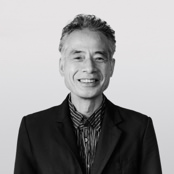 [Field of Specialization]
[Field of Specialization]
Architectural Design
[Research Interest]
- We study supply methods, design planning and relationships between space and ways of living in the sites of the disaster regarding the following: temporary housing complexes, community space houses as an assembly facility, which is call “minna no ie, the House for Everyone”, and disaster public housings, where afflicted people can reside after the restoration.
- We study building construction method to build architecture utilizing diverse materials, and explore possibilities of design. Main materials that we use are nature-derived materials such as unused wood materials and bamboo materials. Utilizing technology, we employ diverse approaches such as three-dimensional scanning, simulation technique, digital fabrication, interdependence structure, and deployment structure to explore possibilities of architecture designs that have not been realized before.
Professor YOO, JAEWOO / PNU(JDP+DDP)
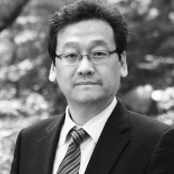 [Field of Specialization]
[Field of Specialization]
Architectural Planning/ Architectural History and Culture/ Housing Research
[Research Interest]
- Analysis of types of vacant houses in declining cities: Analyzing the actual conditions of use and transformation patterns by tracking the process of extension and transformation of residential spaces by the number of families and life cycles to clarify the unit types of refugee dwellings.
- Study on the cases and methods of urban regeneration in East Asia, including Korea, China, and Japan based on the historical and cultural identity.
- Spatial transformation patterns for each life cycle in Busan's unique type of refugee residence, analysis of the status and characteristics of elderly people's residence, and suggestion of utilization plans for idle areas based on analysis of the use of idle spaces.
- Residential Welfare Plan: High value-added urban regeneration plan for the vulnerable in an area targeting old dwellings and idle facilities.
- Community Design: Developing the relationship with the mental map to building a possible and sustainable living environment for the community space of residents.
Associate Professor Tsutomu Shiga / KYU(JDP+DDP)
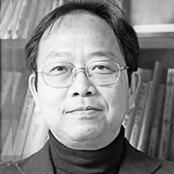
Architectural Planning, Housing Planning
[Research Interest]
- Living Environment Management in Slope Residential Areas with Decreasing Households
- Operation Method of Resident Self-Management in Public House
- Secular Changes of Residents’ Living Styles and Management Activities in Old Condominiumscomplexes in China
- Improvement of Living Environment of Old Apartment Complexes in China
Professor PARK CHANGBAE / PNU(JDP+DDP)
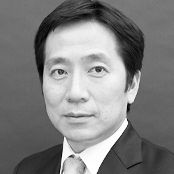 [Field of Specialization]
[Field of Specialization]
Architectural Design
[Research Interest]
- Citizen Participatory Architectural Design : Support for citizen participation in architectural design research and practice to create a new public space, as the flow of citizens' active participation in urban decline and resolving social problems has led to the planning of public architecture that has been centered on experts.
- Building typology: There are always new building types emerging to accommodate human behavior change. An early and careful insight the type can accelerate and socialize the change of human behavior.
- Building informatization model technical support : For efficient operation and management of existing facilities, based on ongoing hospital facility informatization modeling and utilization support services, the scope of application of building informatization model technology is expanded to the facility management area and technologies such as AI, VR, and building 3D scanning support.
Professor LAWRENCE KIM / PNU(JDP+DDP)
 [Field of Specialization]
[Field of Specialization]
Architectural Design & Planning / Urban Design
[Research Focus]
We believe that the best design is the product of boundless curiosity, rigorous examination, and an open-minded search for a creative solution. We take an interdisciplinary and multi-scalar approach to design. Both the process and the product, architectural design focuses on a broad range of concerns, including context, site,
program, form, budget, materials, and explore opportunities within the very constraints of each project. On a larger scale, urbanism is examined as the study of how inhabitants of cities interact with the built environment. Urban design, a direct component of urbanism, moves beyond the study of urban spaces as the practice that actively shapes the urban areas and the city with systems of strategies and interventions that integrate people with the built environment.
Assistant Professor JIN KEOJIN / PNU(DDP)
 [Field of Specialization]
[Field of Specialization]
Environmental·Digital·Super-tall Architectural Design
[Research Interest]
- Concrete apartment typology has been accepted as the representative type of residential building type in Korea. This research is to search for the method that can replace this environmentally destructive construction method with an environmentally positive one, such as the new mass timber technology. This research will itemize all identified economic, cultural, and trading & labor factors and numerically compare the impacts between different construction methods.
- This research aims to reconstruct the true meaning of comfort inside our built environment by studying the reaction of our bodies against the materials that comprise buildings. The analysis will address the physical and psychological factors that affect our bodies’ comfort, which in turn, is used to understand and achieve the maximum thermodynamic efficiencies.
- During the post-war period, prefab/ modular construction was actively used to provide low-income social housing in Europe. However, due to the lack of cultural sensitivity and the poor design and maintenance quality, most projects had proven to be unsuccessful. However, technological updates and prolonged urban concentration have begun to spot this old technology and renewed interest. This research searches for ways to imbue a high level of design qualities to create new architectural possibilities with advanced performative control.
Assistant Professor PAEK SEUNGHAN / PNU(JDP+DDP)
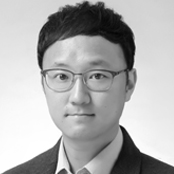 [Field of Specialization]
[Field of Specialization]
Architectural Theory
[Research Interest]
- The Billboard Community: This is an ongoing book project derived from my Ph.D. dissertation, in which I aim to investigate the phenomenon of commercial signage known as ganpan in Korean, one of the prevailing but understudied strata of the streetscape in South Korea. I pay attention to its ambivalent nature that is ordinary and spectacular, in ways to rethink what is meant by the everyday/ordinary in commercially saturated urban environments.
- Architecture and New Materialisms: New materialisms is an interdisciplinary body of research that explores the world that is more than human. By putting conversation with various strands labeled under new materialisms such as actor-network theory (ANT), affect, and Object-Oriented Ontology (OOO), this project strives to open up the set of dimensions of architecture that are at once human and nonhuman.
- Architecture in the Age of the Anthropocene: This project explores what architecture can do in the age of the Anthropocene, and deals with continuing environmental crises such as climate change and (plastic) wastes. By challenging environmental moralism which is the prevailing way of thinking about that issue, the project aspires to ‘stay with the trouble’ in the sense of Donna Haraway, in ways to bring forth ways of doing in the fields of architecture and urbanism.
- Image-abilities: This is a new materialist approach to contemporary architecture. It considers ‘image’ to be a crucial nonhuman actor bringing forth architecture in both materialized and virtual manners. By critically reviewing the term ‘image-ability’ that critic Hal Foster addresses, this project claims that image is not so much a means to achieve work of architecture but rather the agent unfolding forms of life in both corporeal and technological senses.